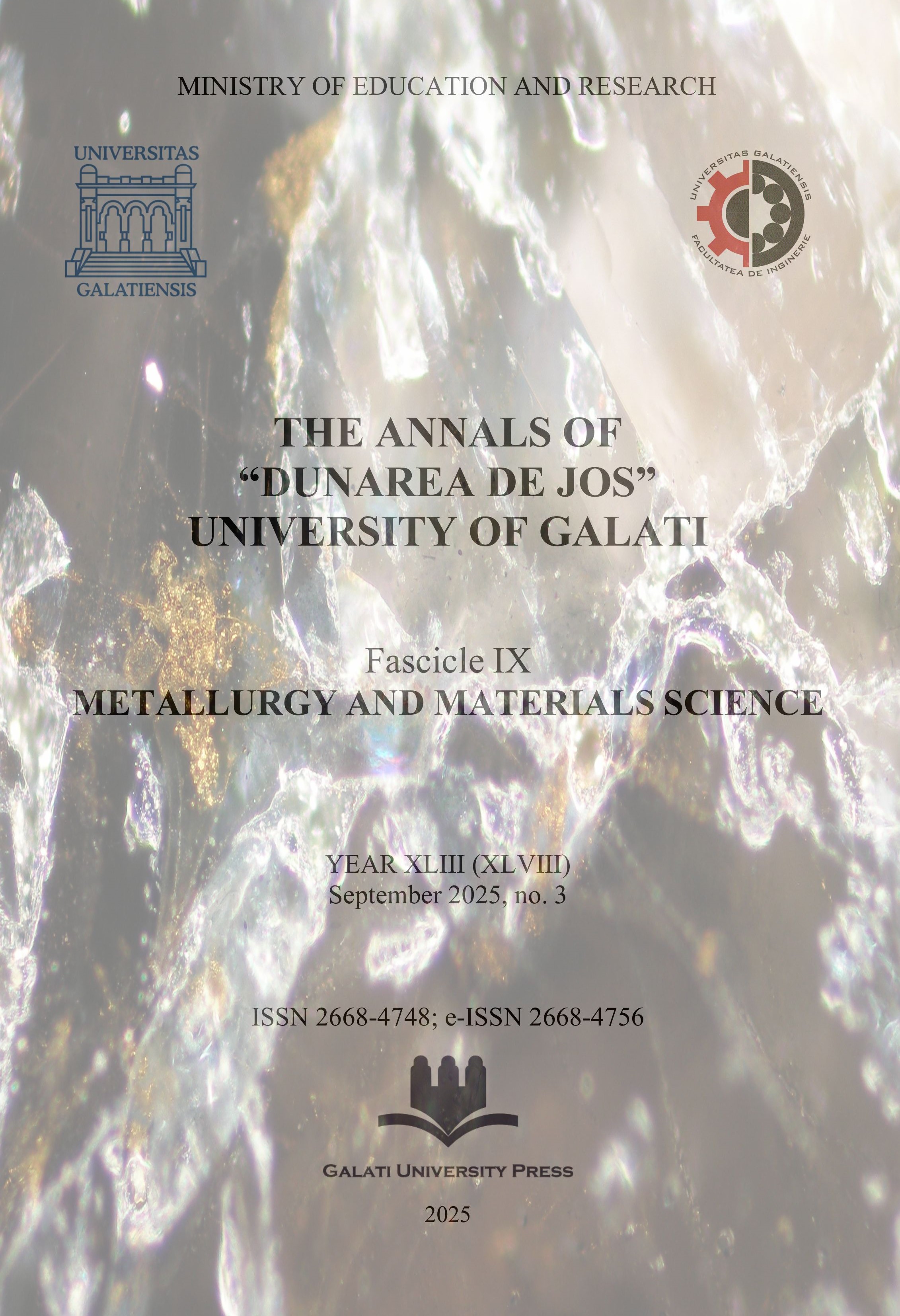Numerical Simulation and Optimization of Aluminum Die Casting for Enhanced Part Quality
Abstract
This paper investigates the injection process of aluminium alloys through a virtual simulation approach, aiming to optimize technological parameters for improved product quality. The study focuses on the behavior of the molten material during cavity filling, highlighting aspects such as flow uniformity, temperature distribution, and areas prone to defects like porosity and shrinkage. A threedimensional model of the mould and the part was analysed to assess the influence of the injection gate’s positioning and geometry. The simulation results revealed critical regions associated with turbulent flow and uneven solidification. Several design iterations were carried out to reduce structural imperfections and achieve balanced mould filling. The outcomes of the study offer a set of recommendations for improving the performance and reliability of aluminium injection processes, supporting efficient and defect-free production in industrial applications.
Downloads
References
[2]. Haban A., et al., Development and Characterisation of a New Die Casting Die Cooling System Based on Internal Spray Cooling, Metals, vol. 14, no. 9, p. 1-13, 2024.
[3]. Jiang J., Yan J., Liu Y., Numerical Simulation and Experimental Validation of Squeeze Casting of AlSi9Mg Aluminum Alloy Component with a Large Size, Materials, vol. 15, no. 12, p. 4334-4346, 2022.
[4]. Bouracek J., et al., Experimental and Numerical Investigations into Heat Transfer Using a Jet Cooler in High Pressure Die Casting, Journal of Manufacturing and Materials Processing, vol. 7, no. 4, p. 1-14, 2023.
[5]. Ott C., Research on Numerical Simulation and Integrated Die Casting Process of Large Complex Thin Walled Aluminum Alloy Automobile Rear Floor, SSRN Technical Reports, 2025.
[6]. Lu X., Dong F., Optimization Design of Injection Mold Conformal Cooling Channel - A Simulation Approach, Processes, vol. 12, no. 6, p. 1232-1240, 2024.
[7]. Oner M., Lebrun J. L., Conformal Cooling Channels in Injection Molding: A Review of CFD-Based Design and Heat Transfer Performance Analysis, Energies, vol. 18, no. 8, p. 1972-1988, 2025.
[8]. Ibrahim I., Gautam U., Haghniaz B., Influence of Injection Velocity on the Evolution of Porosity: Numerical and Experimental Comparison, Journal of Materials Engineering and Performance, vol. 33, no. 1, p. 55-67, 2024.
[9]. Lu X. X., et al., Numerical Simulation and Optimization of Die Casting for Automotive Shift Tower Cover, Metalurgija, vol. 63, no. 1, p. 140-142, 2024.
[10]. Sheighbour M., Huang Y., Optimization in Thin-Walled High-Pressure Die Casting Using Simulation Tools, Engineering Review, vol. 41, no. 2, p. 112-120, 2023.
[11]. Wang Y., Liu M., Simulation and Analysis of Cooling Performance in Die Casting Molds with Conformal Channels, International Journal of Heat and Mass Transfer, vol. 191, p. 122-130, 2022.
[12]. Zhang Y., Lee S., Numerical Analysis of Mold Filling in High-Pressure Die Casting of Aluminum Alloys, Materials Processing Journal, vol. 18, no. 1, p. 15-26, 2023.
[13]. Rattanasakchai P., An Experimental Study on the Performance of Spray Cooling in Die Casting Mold, Materials and Design, vol. 214, p. 1-10, 2022.
[14]. Kim Y. J., Bae D. H., Analysis of Residual Stress Distribution in Die Cast Aluminum Alloy Using Finite Element Method, Engineering Fracture Mechanics, vol. 274, p. 108753, 2023.
[15]. Krolczyk G., Królczyk J. B., Modeling of Cooling System Efficiency in High Pressure Die Casting Tools, Applied Thermal Engineering, vol. 189, p. 116654, 2021.
[16]. Li H., Yin D., Advances in Thermal Simulation for Metal Casting Processes, Simulation Modelling Practice and Theory, vol. 120, p. 102520, 2022.
[17]. Fernandes F. A., Barata da Rocha A., Design Optimization of Cooling Systems for HPDC Molds Using Genetic Algorithms, Journal of Manufacturing Science and Engineering, vol. 145, no. 3, p. 031009, 2023.
[18]. Gupta S., A Review on Numerical Simulations in Casting Process Design and Optimization, Materials Today: Proceedings, vol. 71, p. 240-248, 2023.



